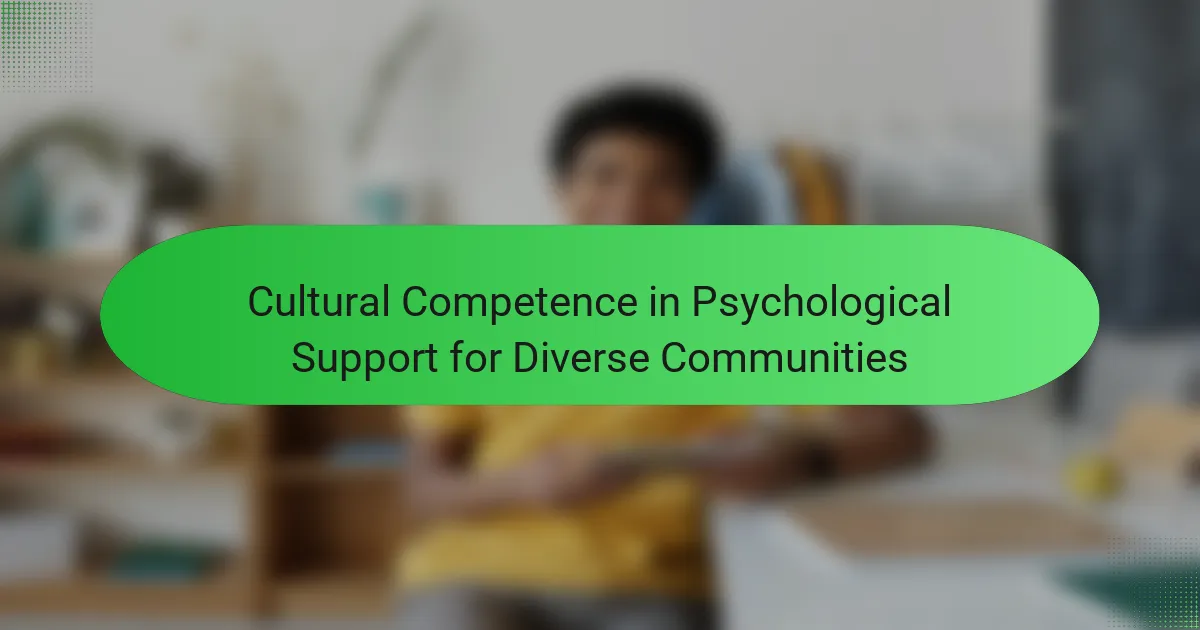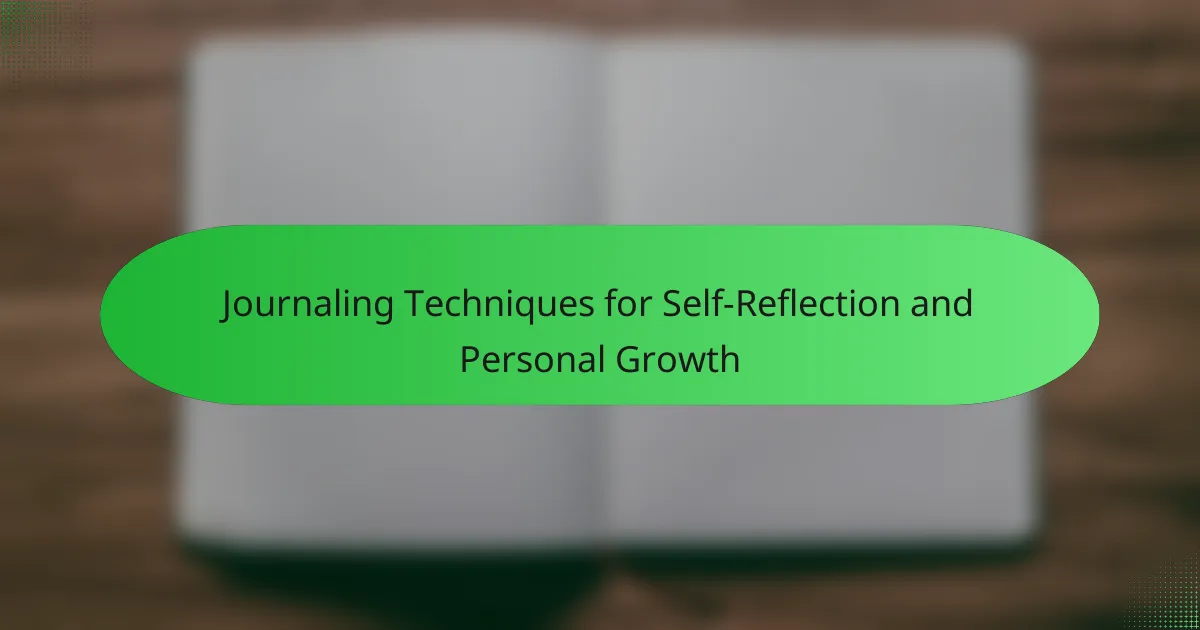Art therapy serves as a powerful tool for emotional expression and personal empowerment. It provides a safe space for exploring complex emotions, enhances self-awareness, and promotes healing through creative processes. Various techniques, such as drawing and painting, facilitate non-verbal communication of feelings. Cultural context plays a significant role in shaping art therapy practices, ensuring they resonate with diverse backgrounds and experiences.
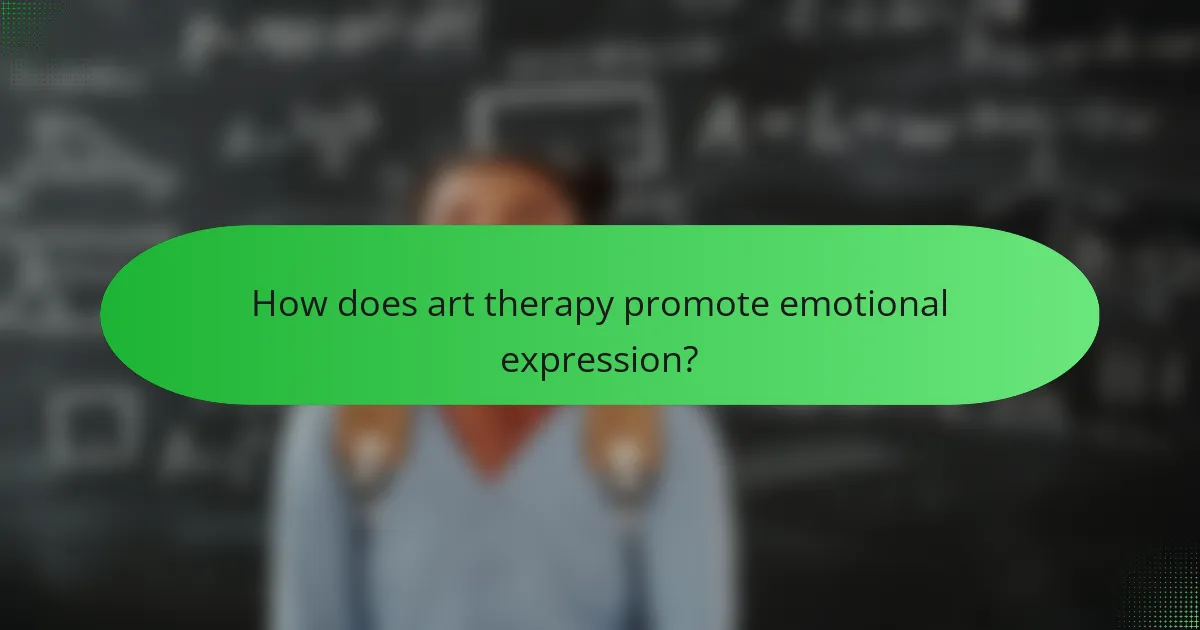
How does art therapy promote emotional expression?
Art therapy promotes emotional expression by providing a safe space for individuals to explore feelings creatively. This therapeutic approach encourages self-discovery through various art forms, enabling participants to communicate emotions that may be difficult to verbalize. As a result, art therapy fosters emotional release and enhances self-awareness. Studies indicate that engaging in creative activities can reduce anxiety and improve overall emotional well-being, making art therapy a powerful tool for empowerment.
What are the psychological benefits of art therapy?
Art therapy offers significant psychological benefits, enhancing empowerment and emotional expression. It facilitates self-discovery, reduces anxiety, and fosters resilience. Engaging in creative processes allows individuals to articulate feelings that may be difficult to express verbally. Research indicates that art therapy can lead to improved mood and increased self-esteem, making it a valuable tool for mental health. Additionally, it promotes mindfulness, helping individuals stay present and focused. Overall, art therapy serves as a powerful medium for personal growth and emotional healing.
How can art therapy facilitate self-discovery?
Art therapy facilitates self-discovery by enabling individuals to express emotions and explore their identities through creative processes. This therapeutic approach encourages self-reflection, allowing participants to confront personal challenges and gain insights into their thoughts and feelings. Studies show that art therapy can enhance emotional awareness and foster resilience. By engaging with various art forms, individuals can uncover hidden aspects of themselves, leading to personal growth and empowerment.

In what ways does art therapy empower individuals?
Art therapy empowers individuals by enhancing emotional expression, fostering self-discovery, and promoting healing. This therapeutic approach allows individuals to communicate feelings through creative processes, which can lead to increased self-awareness and confidence.
Art therapy provides a safe space for exploring complex emotions. Participants often find that visual expression helps articulate feelings that may be difficult to verbalize. As a result, individuals experience a sense of relief and validation.
Furthermore, art therapy encourages personal growth. Engaging in creative activities can lead to new insights about oneself and one’s experiences. This journey of self-exploration often results in improved coping skills and resilience.
In addition, art therapy can build community and connection. Group sessions foster a sense of belonging and support among participants. Sharing artistic experiences can create bonds that enhance the therapeutic process.
How does art therapy enhance self-esteem and confidence?
Art therapy enhances self-esteem and confidence by fostering self-expression and personal reflection. Engaging in creative processes allows individuals to explore emotions, leading to greater self-awareness. This form of therapy often results in improved mood and reduced anxiety, promoting a sense of accomplishment. As individuals create art, they develop skills that reinforce their capabilities, contributing to a positive self-image. Research indicates that art therapy can significantly elevate self-esteem levels, particularly in individuals facing emotional challenges.
Which populations benefit most from art therapy?
Individuals with mental health challenges, trauma survivors, and those with developmental disabilities benefit most from art therapy. This therapeutic approach empowers participants to express emotions and experiences creatively. Research shows that art therapy can reduce anxiety and improve emotional regulation. Populations such as children, veterans, and the elderly also find significant relief through this form of therapy, enhancing their overall well-being.
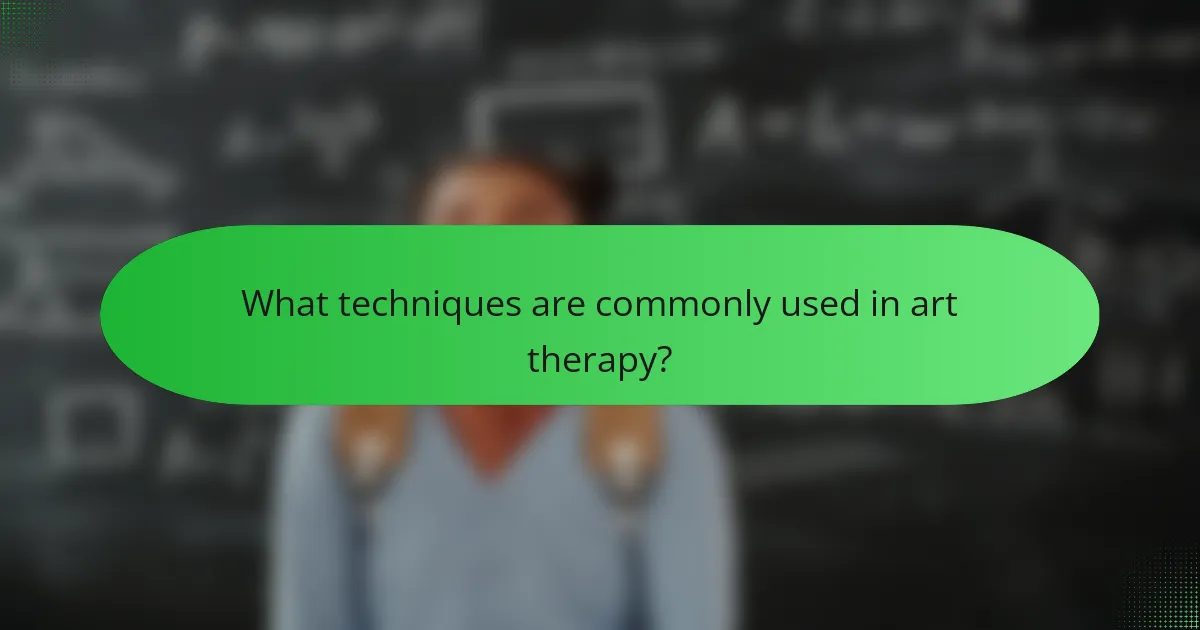
What techniques are commonly used in art therapy?
Art therapy employs various techniques to foster empowerment and emotional expression. Common techniques include drawing, painting, sculpting, and collage-making. These methods allow individuals to communicate feelings non-verbally, facilitating self-discovery and healing. Additionally, guided imagery and art-based journaling enhance introspection and emotional processing. Each technique serves to create a safe space for exploring complex emotions and personal narratives.
How do different art forms contribute to therapeutic outcomes?
Different art forms enhance therapeutic outcomes by fostering empowerment and emotional expression. Visual arts, music, and drama therapy each provide unique avenues for individuals to process feelings and experiences.
Visual arts enable self-exploration through creation, allowing individuals to manifest emotions in tangible forms. Music therapy promotes relaxation and emotional release, facilitating communication when words may fail. Drama therapy encourages role-playing, helping individuals confront and reframe personal narratives.
These art forms collectively support mental health by improving self-awareness and resilience. Engaging with various mediums can lead to profound therapeutic breakthroughs, reinforcing the value of art in emotional healing.
What role does guided imagery play in art therapy?
Guided imagery enhances art therapy by facilitating emotional exploration and self-expression. It allows individuals to visualize their feelings, leading to deeper insights and creative expression. This technique can help clients access suppressed emotions, transforming them into visual art forms. As a result, guided imagery serves as a powerful tool for empowerment in therapeutic settings.
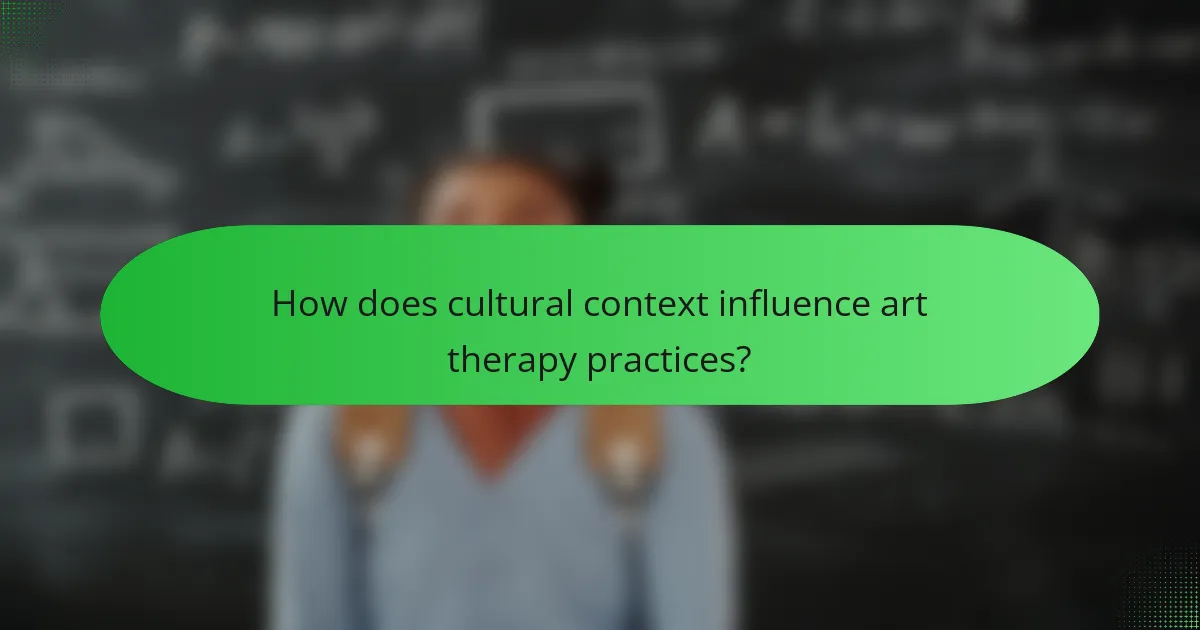
How does cultural context influence art therapy practices?
Cultural context significantly shapes art therapy practices by influencing techniques, themes, and client interactions. Cultural beliefs and values determine what forms of expression are encouraged or stigmatized. For example, collectivist cultures may emphasize group activities, while individualistic cultures may focus on personal expression. Understanding cultural nuances enhances the therapeutic relationship and effectiveness of art therapy. This adaptability allows therapists to tailor their approaches, ensuring they resonate with clients’ backgrounds and experiences. Ultimately, cultural context enriches the therapeutic process, promoting empowerment and emotional expression through art.
What are the unique approaches to art therapy in various cultures?
Art therapy varies significantly across cultures, employing unique methods for empowerment and emotional expression. In Indigenous cultures, art often embodies spiritual connections and communal healing, using traditional symbols and storytelling. In Western contexts, art therapy tends to focus on individual psychological processes, encouraging personal reflection through various mediums. Asian cultures may integrate mindfulness practices with art, emphasizing harmony and balance. African art therapy often highlights community and cultural identity, using vibrant colors and communal projects to foster unity. Each approach reflects the cultural values and emotional needs of its community, showcasing art’s universal role in healing.
How do regional art materials impact therapy sessions?
Regional art materials significantly enhance therapy sessions by fostering cultural connection and personal expression. Local materials often resonate more deeply with clients, encouraging creative engagement. For instance, indigenous clay or natural pigments can evoke memories and emotions tied to personal or cultural heritage, enriching the therapeutic experience. Moreover, using familiar materials can lower barriers to participation, making clients feel more comfortable and open. This unique attribute of regional art materials can lead to more effective emotional expression and empowerment during art therapy sessions.
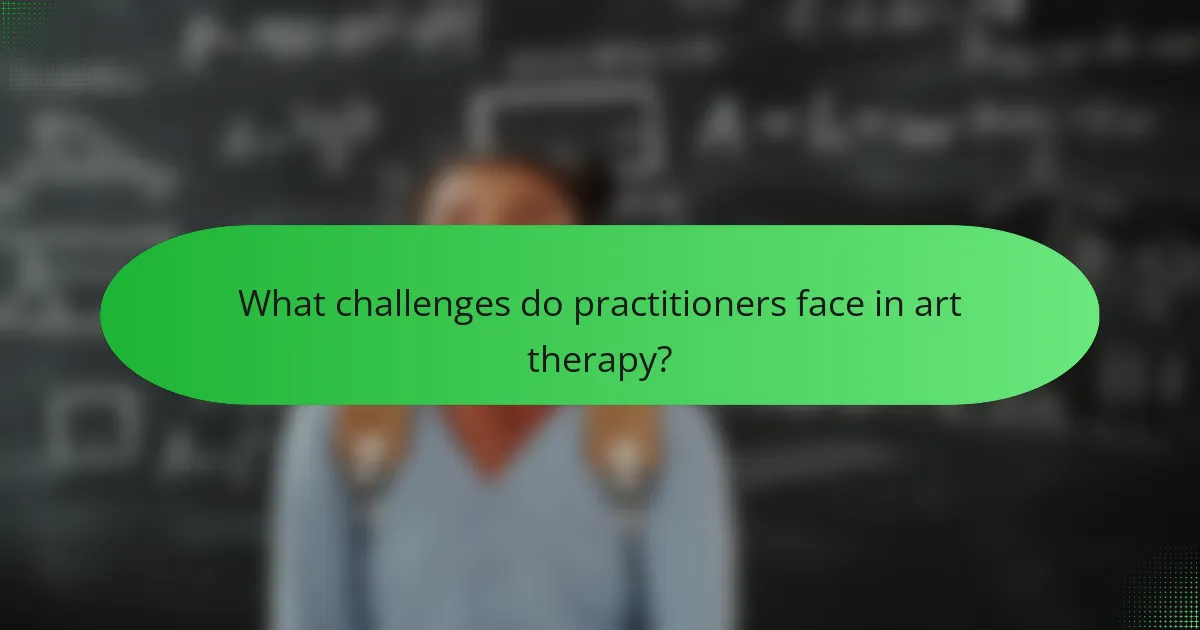
What challenges do practitioners face in art therapy?
Practitioners in art therapy face several challenges that can hinder their effectiveness. Limited funding affects access to resources and materials. Client resistance can arise from discomfort with self-expression. Additionally, managing diverse client needs requires adaptability and specialized skills. Time constraints often limit the depth of therapeutic engagement. Lastly, measuring outcomes in art therapy remains complex, complicating the demonstration of efficacy.
How can therapists address emotional resistance in clients?
Therapists can address emotional resistance by utilizing art therapy to facilitate empowerment and emotional expression. Art therapy encourages clients to explore feelings through creative processes, allowing them to express emotions that may be difficult to articulate verbally. This approach fosters a safe environment where clients can confront their resistance and gain insights into their emotional landscape.
Research indicates that art therapy can lead to significant improvements in emotional regulation and self-awareness. For example, a study found that 80% of participants reported enhanced emotional expression after engaging in art therapy sessions. This therapeutic modality uniquely integrates creativity, helping clients transform resistance into a tool for personal growth.
By incorporating various art forms, such as painting or sculpting, therapists can tailor sessions to individual preferences, making the therapeutic experience more engaging. This customization enhances the likelihood of overcoming emotional barriers and fosters a deeper connection between the therapist and client.
In summary, art therapy serves as a powerful tool for therapists to help clients navigate emotional resistance, promoting healing and self-discovery through creative expression.
What are the ethical considerations in art therapy?
Ethical considerations in art therapy include client confidentiality, informed consent, and the therapist’s qualifications. Respecting these principles fosters a safe environment for emotional expression. Additionally, therapists must navigate potential power imbalances and cultural sensitivities. These factors ensure that art therapy empowers clients while minimizing harm.
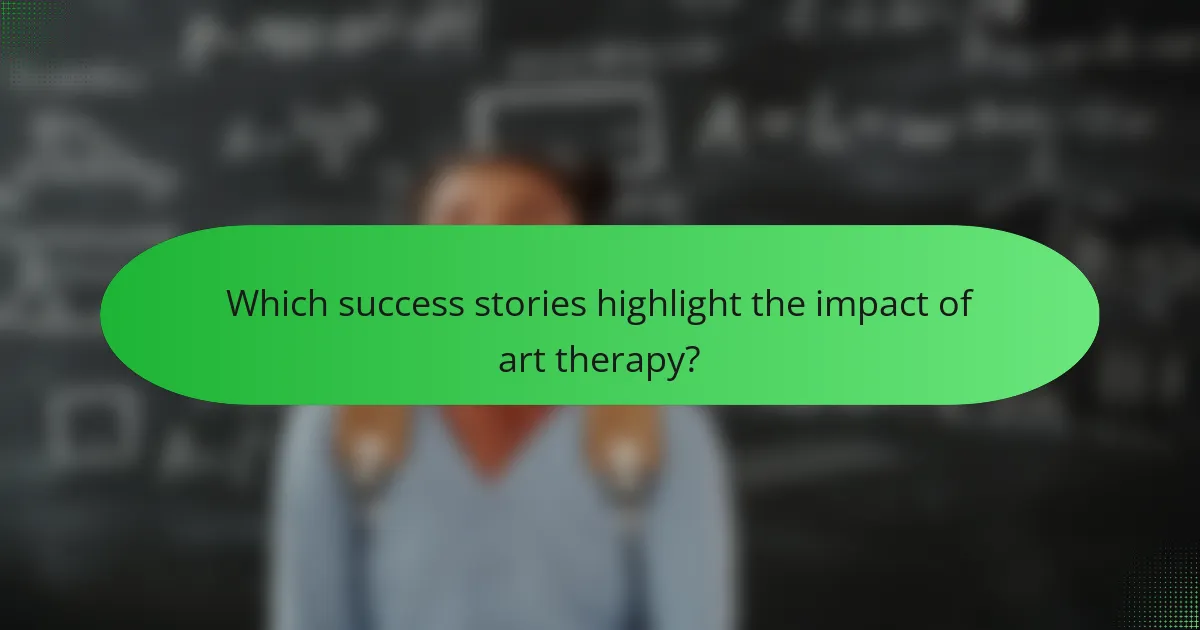
Which success stories highlight the impact of art therapy?
Art therapy has transformed lives, showcasing its impact through various success stories. One notable example is a program in a children’s hospital where art therapy helped young patients express their fears and anxieties about medical treatments. The therapy led to improved emotional well-being and reduced stress levels.
Another impactful story comes from a community center that offered art therapy to veterans. Participants reported enhanced emotional expression and connection with others, aiding their recovery from trauma. The unique attribute of using creative outlets facilitated healing in ways traditional therapies could not.
In a rehabilitation facility, art therapy enabled individuals struggling with addiction to articulate their experiences through visual art. This approach fostered a sense of empowerment, as participants discovered their creative abilities and gained confidence in their recovery journey.
These stories demonstrate art therapy’s effectiveness as a powerful tool for emotional expression and personal empowerment, highlighting its role in diverse settings and populations.
What case studies demonstrate transformative outcomes?
Art therapy has shown transformative outcomes in various case studies, highlighting its effectiveness in emotional expression and empowerment.
One notable case involved a group of adolescents facing trauma. Through art therapy, participants expressed their feelings visually, leading to improved emotional regulation and reduced anxiety.
Another study focused on veterans with PTSD. Engaging in art-making allowed them to process their experiences creatively, fostering a sense of community and shared healing.
Additionally, a case involving elderly patients in long-term care demonstrated that art therapy enhanced cognitive function and emotional well-being, proving beneficial for those with dementia.
These examples illustrate art therapy’s unique ability to facilitate personal growth and emotional resilience across diverse populations.
How have organizations integrated art therapy into their programs?
Organizations have integrated art therapy into their programs to enhance emotional expression and empowerment. Art therapy fosters creativity, allowing individuals to process emotions and experiences in a safe environment. Programs in schools, hospitals, and community centers utilize art therapy to support mental health and personal growth. For instance, hospitals often incorporate art therapy to help patients cope with trauma and stress, promoting healing through creative outlets. Additionally, schools use art therapy to support students facing emotional challenges, encouraging resilience and self-discovery. These integrations demonstrate the versatility and effectiveness of art therapy in various settings.
What are the best practices for conducting art therapy sessions?
To conduct effective art therapy sessions, focus on creating a safe and supportive environment. Establish clear goals and encourage open emotional expression through various art forms.
Incorporate the following best practices:
1. Build rapport with clients to foster trust.
2. Use diverse materials to stimulate creativity.
3. Allow freedom in artistic expression without judgment.
4. Facilitate discussions about the artwork to deepen insights.
5. Tailor activities to individual needs and preferences.
6. Regularly evaluate progress and adapt approaches accordingly.
